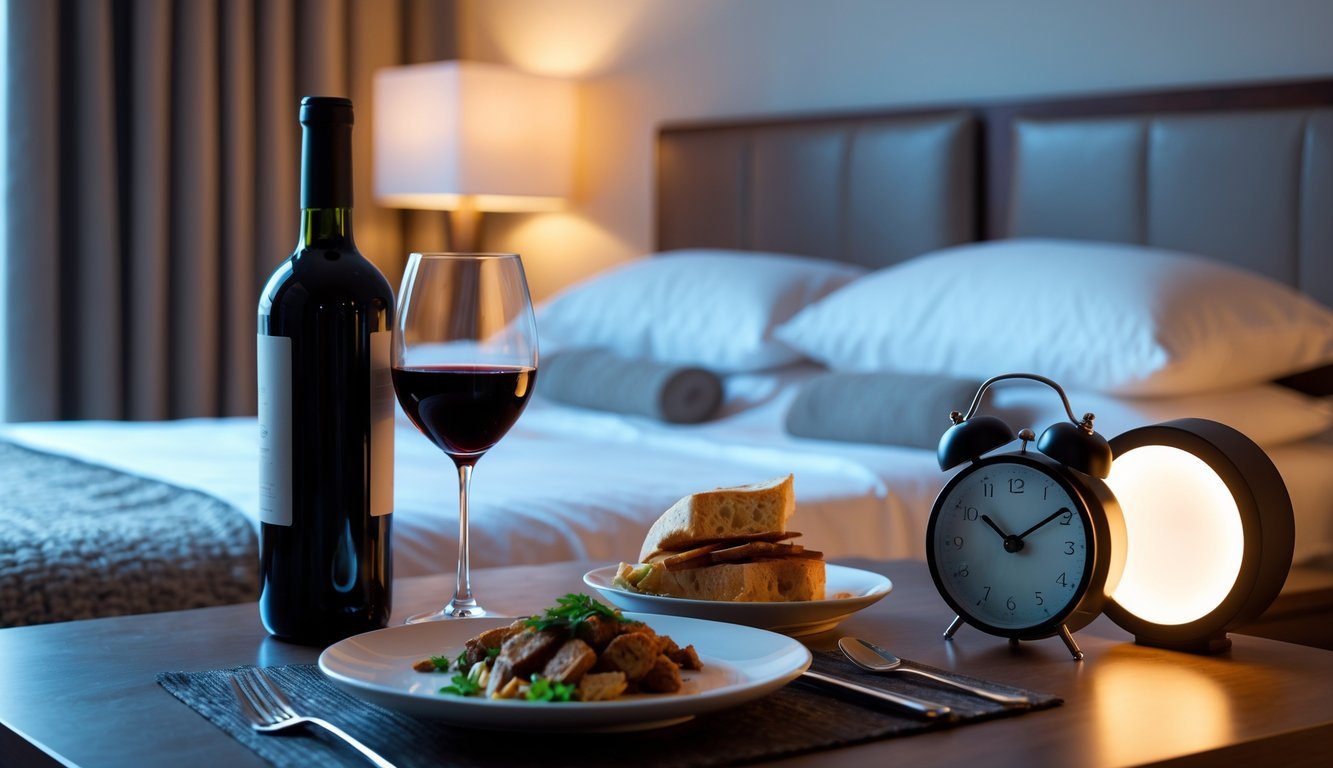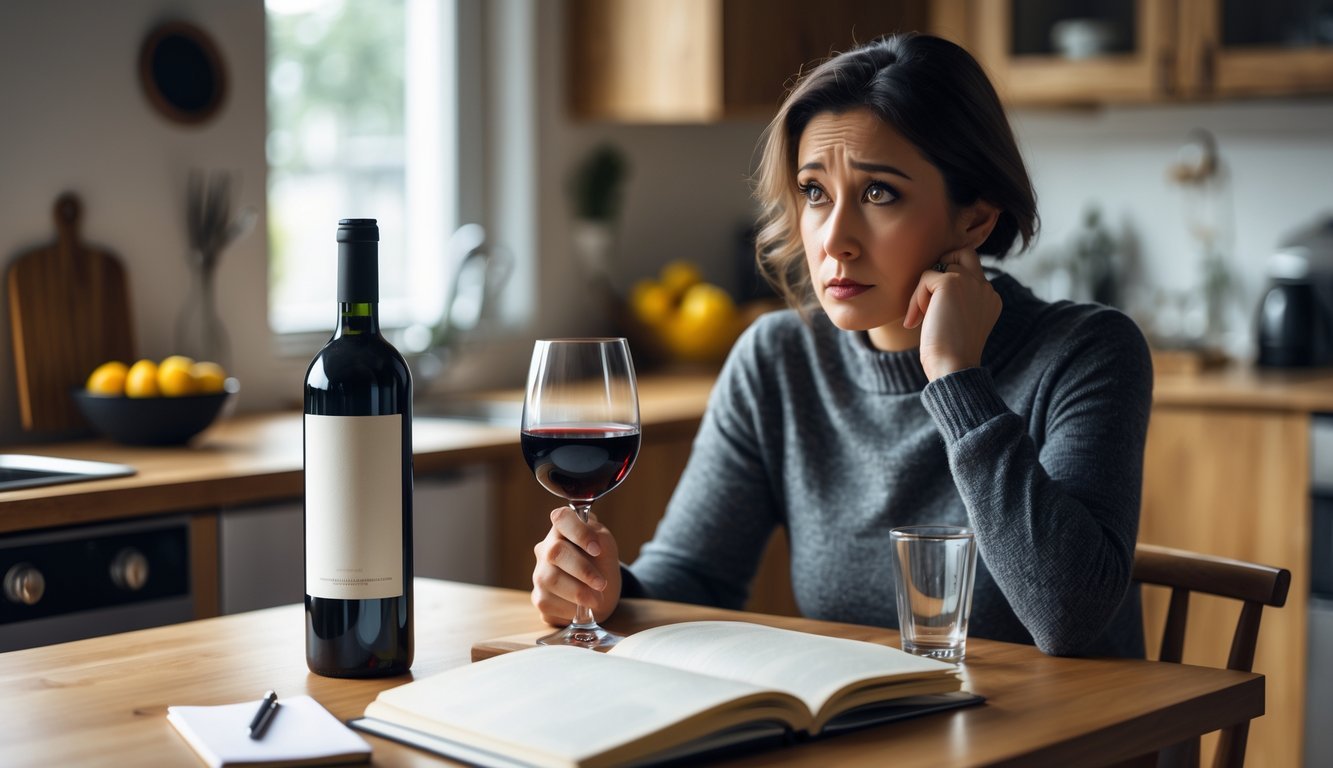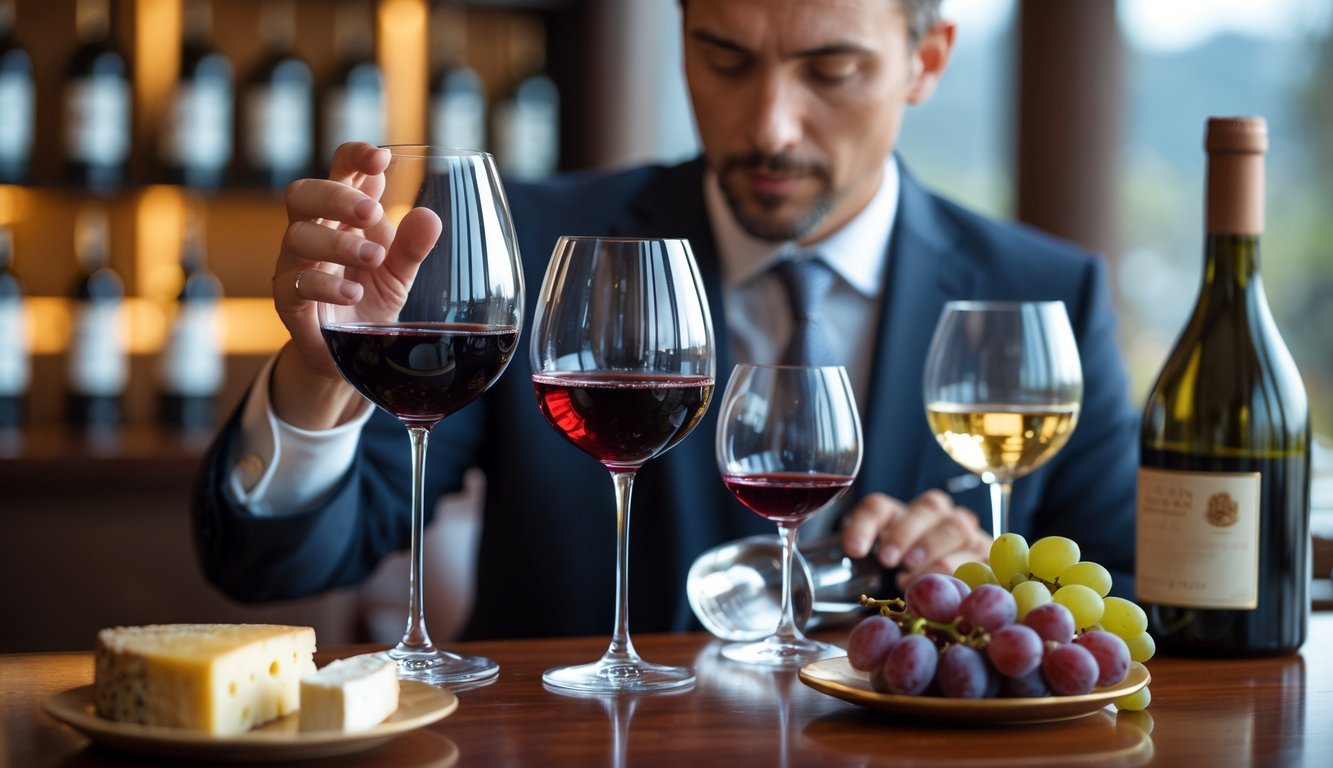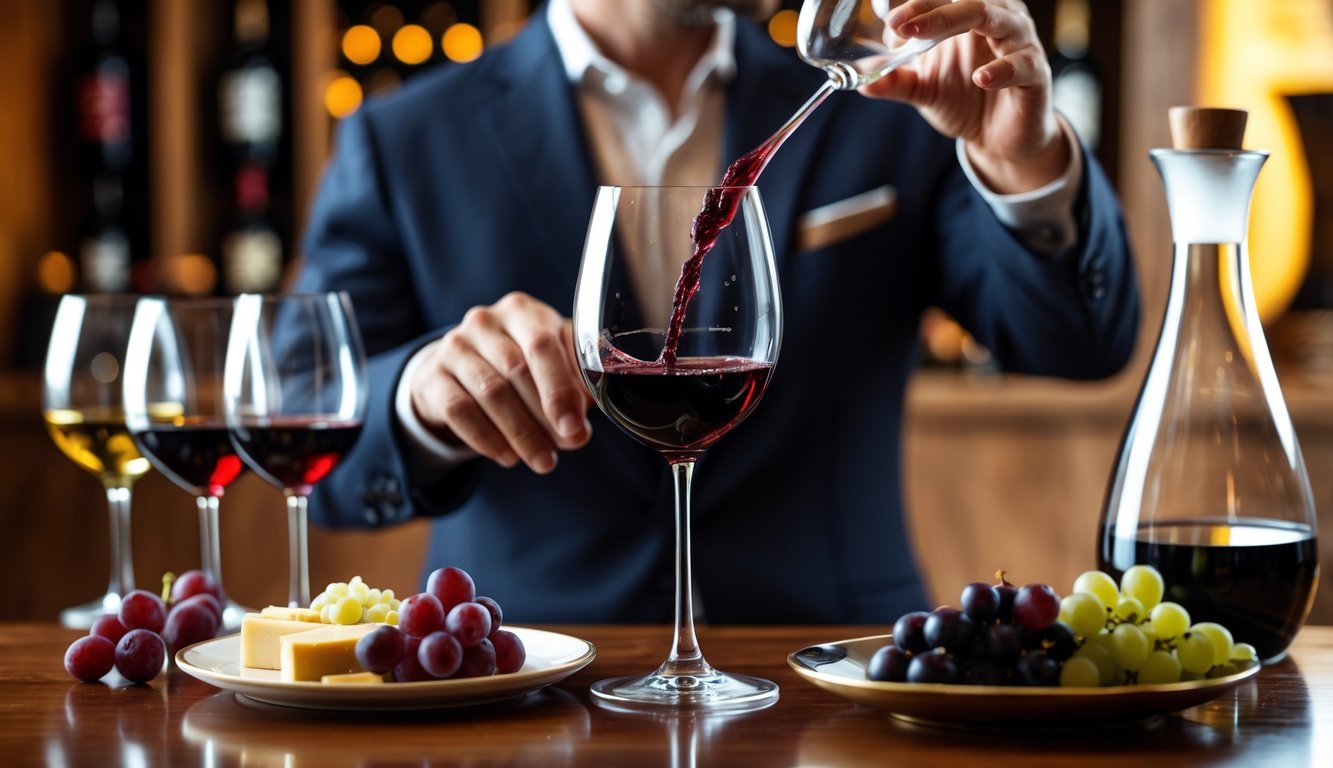PsychNewsDaily Publishers
100 Summit Drive
Burlington, MA, 01803
Telephone: (320) 349-2484
PsychNewsDaily Publishers
100 Summit Drive
Burlington, MA, 01803
Telephone: (320) 349-2484
Wine can induce anxiety, disrupt sleep, and strain relationships when consumed improperly. Mindful drinking practices enhance enjoyment and promote healthier habits. Proper serving and storage are essential.

Wine can be a great way to unwind or pair with a meal, but sometimes it just doesn’t do you any favors. Maybe you think you’re handling your wine habits just fine, but there are ways of drinking that might cause problems you don’t even realize.
Spotting the signs that you’re drinking wine the wrong way can help you dodge health and lifestyle headaches. Let’s talk about what to look out for, so you can enjoy wine without it making life harder.

Maybe you grab a glass of wine to chill out after a rough day. Wine feels like a quick fix to calm your mind.
But sometimes, you end up feeling more anxious after drinking. Alcohol acts as a depressant. At first, it slows your brain, but later it can mess with your mood and ramp up anxiety.
If you regularly use wine to cope with stress, you might notice your anxiety gets worse over time. That short relief can turn into a cycle where you feel more anxious and want another drink.
It’s worth thinking about how wine affects your stress before you pour another glass.

Drinking wine before bed might make you feel sleepy at first. But wine can actually mess with your sleep cycle.
You might wake up groggy or unrefreshed. Wine changes how your brain works during sleep and cuts down on deep, restful sleep.
Try skipping wine at least three hours before bedtime. This gives your body time to process the alcohol and helps protect your sleep.

If you find yourself reaching for wine every time you feel awkward or shy, you might be leaning on it as a social crutch. That means you’re relying on alcohol to feel comfortable instead of just enjoying the moment.
Wine’s best in moderation, right? If you’re drinking to escape nerves or boost your confidence, it’s easy for things to get out of hand.
Ask yourself why you’re drinking. If it’s mostly to ease stress or avoid awkwardness, maybe it’s time to rethink your habits.
Learning to enjoy wine slowly and mindfully helps you stay in control and actually savor it.

Drinking wine every day might seem harmless at first. But if you never take a break, your liver doesn’t get a chance to recover.
That can sneak up on you and cause long-term health issues. Daily drinking also builds your tolerance, so you might find yourself pouring bigger glasses just to feel the same buzz.
Taking days off helps you stay aware of your drinking. It gives your body a break and keeps your relationship with wine from getting out of balance.
Try to work in some alcohol-free days each week—it’s honestly a good reset.

If you often get headaches after drinking wine, don’t just brush it off. Your body might be reacting to something in the wine.
Stomach pain or discomfort is another red flag. Wine can irritate your stomach lining, especially if you drink too quickly or on an empty stomach.
Listen to these signals. They might mean you need to cut back or change how you drink.
Paying attention to your body helps you enjoy wine without feeling lousy afterward.

It’s easy to overlook when wine starts causing issues with your relationships. Drinking too much can chip away at trust, communication, and closeness.
Wine can also quietly strain your finances. Spending more than you planned on wine might seem minor, but it adds up and can cause stress.
Watch how your wine habits affect your loved ones and your wallet. Noticing these things early helps you keep wine in its place and avoid bigger headaches later.

If you think you need a glass of wine to have fun at events, that’s a sign to pause. It’s absolutely possible to enjoy parties or dinners without drinking, even if it feels weird at first.
Wine should be a treat, not your only way to relax or celebrate. When you rely on it to enjoy yourself, you can miss out on real connections and memories.
Try spending time with friends or family without the wine and just see how it feels. You might be surprised at how much you enjoy being fully present.

Drinking wine the right way really changes how it tastes and feels. It also shapes how you fit in at social events where wine is part of the experience.
Paying attention to the details can make your wine moments more enjoyable. You might even connect better with others.
How you drink wine totally affects what you taste. The right glass can help the wine’s flavor and aroma open up.
Red wines need bigger glasses to breathe. White wines taste best in smaller ones.
Temperature matters a lot. Serving wine too cold or too warm hides its real taste.
Swirling your wine lets air mix in and brings out more flavors. If you just gulp it down, you’ll miss out on its smell and taste.
Taking small sips helps you notice different flavors.
Knowing basic wine etiquette helps you feel more confident around others. For example, holding your glass by the stem keeps your hand from warming the wine.
At tastings or gatherings, pouring just the right amount and not filling glasses to the top shows respect. It also lets everyone appreciate the wine without rushing.
Simple habits, like not clinking glasses too hard, make social moments smoother. These little things show you get wine culture and make you a better guest or host.

To get the most out of your wine, serve it at the right temperature, use the right glass, and store it properly. These details really do make a difference in how wine tastes.
Serving wine at the right temperature unlocks its real flavor. Red wines usually taste best between 60-68°F (15-20°C). If you serve them too warm, the alcohol can take over. Too cold, and you lose the aroma.
White wines do better cooler, around 45-55°F (7-13°C). That keeps them crisp and refreshing.
Sparkling wines are best at about 40-50°F (4-10°C) to keep the bubbles going.
Use a thermometer if you want, or just pop the wine in the fridge for 20-30 minutes before serving. Don’t over-chill, though, or you’ll mute the flavors.
The right glass makes a big difference. Go for glasses with a thin rim and a large bowl for reds. That helps the wine breathe and brings the aromas to your nose.
For whites, stick to a smaller bowl. It keeps the wine cool and focuses the aroma.
Sparkling wines do best in tall, narrow flutes. These keep the bubbles and direct the aroma.
Skip plastic cups or weird shapes. Clear, clean glass lets you see the wine’s color and clarity, adding to the experience.
If you want your wine to stay fresh and tasty, you’ve got to store it right. Lay your wine bottles on their side so the cork stays moist.
Letting the cork dry out? Not a good idea—it can shrink and let air sneak in, which pretty much ruins your wine.
Find a cool, dark place for your bottles, somewhere between 45-65°F (7-18°C). Try not to let the temperature swing too much.
Heat or sunlight? Both can spoil your wine before you know it.
Keep the humidity around 60-70%. That way, you stop corks from drying out and keep mold away.
Don’t stash your wine near strong smells—like in the kitchen—since wine can soak up odors. If you drink wine often, a wine fridge or a cellar really makes a difference.